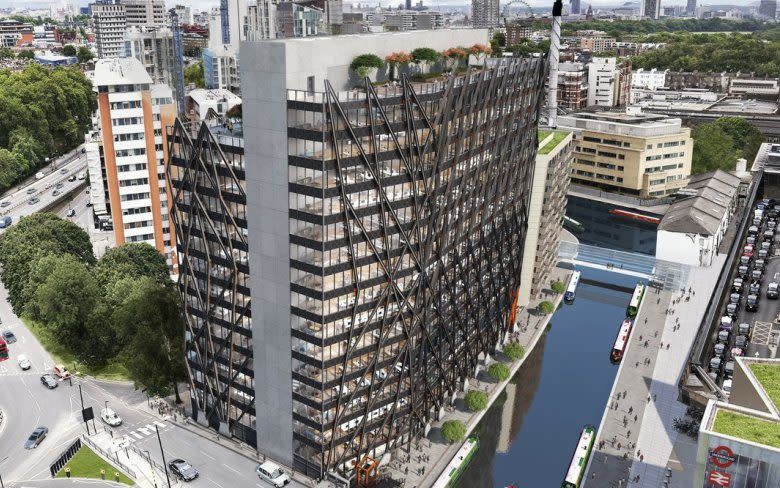A triple whammy has hurt this property stock, but investors have cause for optimism

Hindsight is a wonderful thing. When this column studied Derwent London, the property company, some two‑and‑a‑half years ago, we had a paper profit of some 75pc to our name, since the shares were trading at almost £42 a share compared with our entry point just below £24 in November 2016, and we really should have taken profits.
We did note, with some trepidation, that the shares were trading at an 8pc premium to net asset value, compared with the 30pc‑plus discount that had prevailed when we first studied them. However, we sat still, in the view that the FTSE 250 company had strong long‑term prospects thanks to its portfolio of prime London property, blue‑chip tenant list and low borrowing.
Then came the pandemic, then came inflation and then came rising interest rates and rising gilt yields. As a result, Derwent London’s shares are now trading below our initial purchase price. Our paper capital gain is gone, even if 538.5p a share in ordinary and special dividends over the past six years mean we can (just) point to a positive total return.
The question is what do to with the shares now.
Reits can be seen as bond proxies, so when gilt yields go up, Reit shares go down and when gilt yields go down, Reits’ shares go up (or so the theory goes). This is for three reasons.
First, some (though not all) Reits have plenty of debt. Rising bond yields could affect their cost of borrowing and rising interest costs mean lower profits, lower cash flows and – for shareholders – lower dividends. (However, the reverse also holds true, so lower bond yields mean lower interest costs and potentially higher profits, cash flows and dividends.)
Second, rising bond yields mean rising discount rates and rising discount rates mean lower property and share valuations when you use the higher discount rates to discount back and value future cash flows in a “net present value” calculation. (The reverse is true here too, so lower bond yields mean a lower discount rate and thus potentially higher valuations.)
Finally, one of the key attractions of some – but not all – Reits is their dividend yield. If bond yields are rising, gilts or other bonds may look more attractive relative to Reits since bonds and gilts carry less capital risk, at least in theory.
There is also the issue that some Reits are sensitive to the economy. If rates and bond yields are going up, that can slow the economy and that in turn can be bad news for Reits if tenants struggle to pay their rent, vacancies are not filled and there is less demand for new and existing office space.
Again, the reverse holds true, so lower interest and lower gilt yields can be as good for Reits as increased economic activity can mean safer rents, lower voids and more demand for space.
For the moment, the direction of travel in the Bank of England’s official cost of borrowing and in gilt yields looks more likely to be up than down. Bank Rate is just 2.25pc and the 10‑year gilt yield is 4pc, but inflation is 9.9pc. Worse, the biggest buyer of gilts over the past decade – the Bank of England – is in theory about to turn seller.
In this respect, the environment may remain unhelpful, especially as Derwent London’s 3.9pc prospective dividend yield is also surpassed by the 10‑year gilt yield (and inflation). But then we come back to the issue of valuation.
The Reit’s last stated net asset value per share was £40.23, so Derwent London’s shares trade at a 49pc discount to that. Even allowing for the evident dangers posed by remote working, higher interest rates and an economic slowdown, the shares seem to be already pricing in a very deep downturn.
As a result, having made a hash of a winning position, it feels wrong to give up now. There is no apparent catalyst for performance, although an unexpected reverse in gilt yields would help, especially if such a reverse were prompted by the Bank of England pausing or even changing course on interest rates, which it could well do if the economy turns turtle.
We will hold on.
Questor says: hold
Ticker: DLN
Share price at close: £20.50
Russ Mould is investment director at AJ Bell, the stockbroker
Read the latest Questor column on telegraph.co.uk every Sunday, Tuesday, Wednesday, Thursday and Friday from 6am.
Read Questor’s rules of investment before you follow our tips.

 Yahoo Finance
Yahoo Finance 